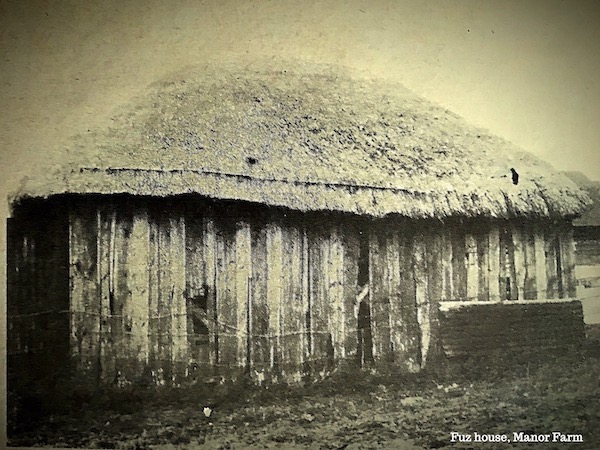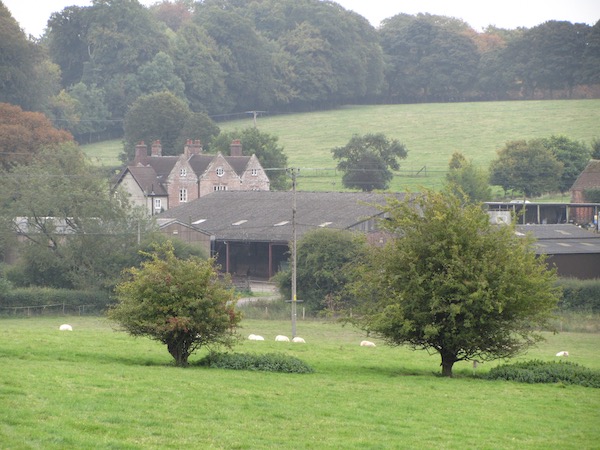MANOR FARM
Manor Farm was previously known as the Great Farm, or Netherhaven Farm (on maps of 1773 and1810). The name “Manor” arrived later, as did Fittleton “Manor”. These two must have been the largest farms in the area.
The situation of the farmstead indicates antiquity as it is close to the site of the Iron Age/Romano British village and Roman villa. Many of the Roman finds now in Salisbury Museum, particularly coins, were found nearby.
The Manor Farm house is a Grade 2 listed mid C18th house of brick with later extensions. There was a large timber framed thatched barn in the farmyard, with further cart sheds; all were demolished in the late 1970s. Nearby also was a rare survival of a “Fuz house” or Furze House with a roof made of brushwood and overlaid with long straw thatch. Its walls were of upright timber planks. Open ended, it could have been used for cart or wagon. There are no traces of a former farmhouse although the now lost farm buildings predated the present house.
The farm is situated on Stagg’s Lane, which was the old road to Devizes across the Plain. Not surprisingly it was the Stagg family who lived there for most of the C19th, farming about 1,200 acres.
It was common for the villages to be dominated by just a few farming families, who often intermarried. The Stagg family were farming at Netheravon and at Coombe Farm, Enford in 1827, the date of Charles Stagg’s will. After his death in 1833 at Netheravon Great Farm he was followed by William Stagg and his wife Martha (Hayter) who married in 1838. A Hicks Beach lease of 1855 gives some of the old field names:
“Agreement for occupation of Netheravon Great Farm and 1176 acres of land in Hill or Old Field, Down or Beat, piece of land called Harefield, and pasture and meadows.” Harefield is the only readily identifiable one today.
William’s wife Martha had died by 1861 and their sons William Henry and George Haytor Stagg had taken over the tenancy by 1867.
William Henry died in in 1880 aged about 38. His wife Fanny (nee Jenner, another local farming family) was running the farm in 1881, employing 25 men and three boys. No doubt casual labour was taken on at harvest and other times. Also in the house on census day were her daughter also called Fanny aged 11, and nephew John Jenner aged four who was related to the Jenners who farmed West Chisenbury and Wexland farms. Others present were a governess, cook housemaid and three visitors. A busy housemaid!
Charles Parfitt took over Manor Farm after the death of Simeon Ruddle
He was there until 1936 when he was declared bankrupt .
The farm was next let to Captain Charles Fox Pitt (The farm was then 609 acres consisting of 56 a grass, 180 a arable and 373 a grazing ) He was there very briefly, being succeeded by Captain J F Brown who gave up in 1946. Woolley and Wallis sold his stock , which comprised of 55 head of cattle, 21 yearling cattle, 11 calves, 3 cart horses, 257 pullets, 2 Fordson tractors and a Marshalls threshing machine.
When the village of Imber was taken for military training in 1943 all its inhabitants had to leave. Sydney George Dean and family were re-located here to Manor Farm and expected to return but of course never did. The oak porch door was reputed to have come from Imber.



